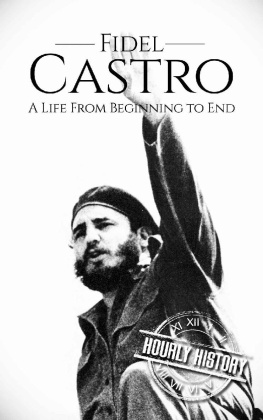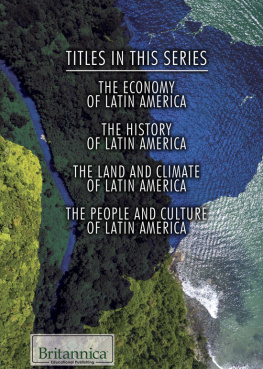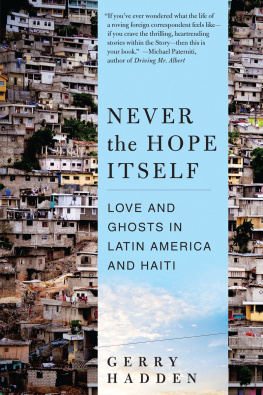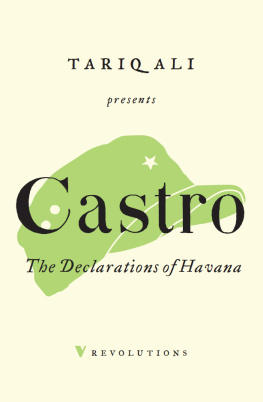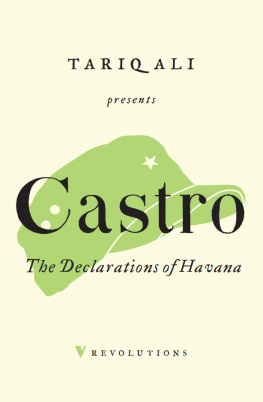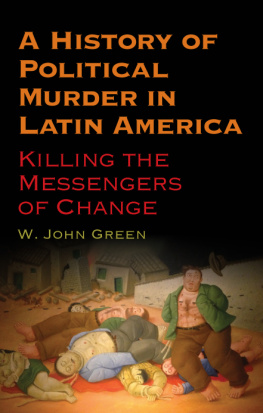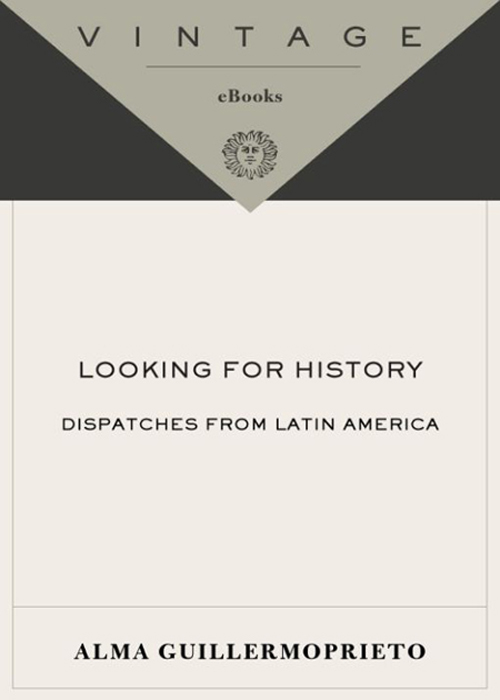
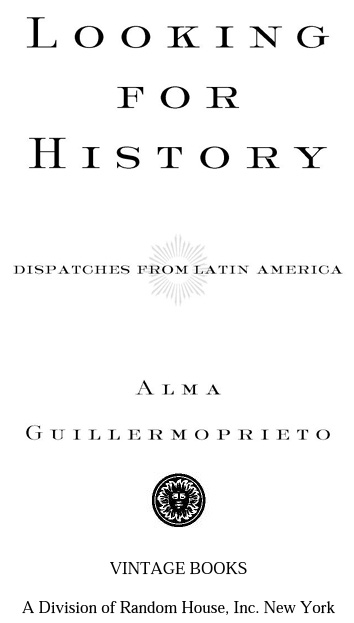
Table of Contents
ACCLAIM FOR ALMA GUILLERMOPRIETO AND LOOKING FOR HISTORY
Powerful and well-written.... Guillermoprieto digs far beneath the glib stereotypes wielded by outsiders to come up with a sensitive portrait of a region grappling with change. [Her] judgments are plausible, her reporting scrupulous and often courageous.
The New York Times Book Review
Guillermoprieto has become the most important journalist of this hemisphere.... [She] employs her reporting method with unparalleled skill.
The Sunday Star-Ledger
Powerful... a literary gem... wonderfully written dispatches that capture the richness and intensity of Latin Americas reality. Those wanting a feel for the spirit of Latin America or what lies behind the headlines will hardly find more vivid accounts of the regions recent history.
The Miami Herald
Informative and perceptive.... Guillermoprieto has a keen eye and an intimate knowledge of notoriously tangled political situations.... Her sharp analysis of the events that have shaped the politics of [Latin America], combined with her conversational style, bring home the reality of this troubled part of the world.
BookPage
With astounding energy, [Guillermoprieto] braves the snarls of politics and the perils of mountains and jungle to hack her way to the heart of the matter and lay out the facts for her reader.... A truly instructive work.
Kirkus Reviews (starred)
Elegant.... [Guillermoprietos] great skill lies in combining wide reading and sympathetic understanding of Latin American perceptions with a knack for the illuminatingly off-beat interview.
The Economist
Brilliant.... She deserves a wide readership.
Carlos Fuentes
INTRODUCTION
The seventeen essays in this collection are an attempt to render visible to U.S. readers some of the more hidden and enigmatic aspects of Latin American history and conflict. They are, with two exceptions, stories about recent political events in the region. And they are predominantly about the three Latin countries with which the United States has been or is about to become most intensely involved: Cuba, Colombia, and Mexico. They are not stories about that relationship, however, but about the countries themselves, written in the conviction that Latin America has its own independent life.
This may seem an obvious statement, but it has not often been the view of policy-makers in the United States or of the political actors on the Latin American stage. Latin American history in the latter half of the twentieth century took place against the backdrop of the Cold War, and it is the grotesque case that hardly any political decision was taken either in Latin America or toward it during that time in which the regions own needs or history were the primary consideration. Instead, the decisions were informed by fantasies, which all too often appeared in the guise of ruthless pragmatism: communism must be stopped; world revolution must be achieved at any cost. In either case, cataclysm and/or salvation were nearly always perceived to be just around the corner.
Cuba was, of course, the great staging ground both for the Cold War fantasy and for a transforming dream that inspired years of revolutionary fervor and counterinsurrectionary horrors throughout the rest of the hemisphere. For long decades a great fog of wishful thinking clothed what actually took place on the island: Cuba was the greatest threat to U.S. security, or, it was a near-utopia whose citizens enjoyed unparalleled prosperity and spiritual freedom. When I returned to the island after a long absence, in 1998, I was shocked to realize that the emperor was dressed in rags. The three stories about Cuba in this collection are an account of that return.
In the 1960s, no other country produced as many Cuba-inspired revolutionary movements as Colombia, and nowhere else did the guerrillas survive as long. Strangely, though, the ferment in Colombia never moved policy-makers in the United States to the acts of mighty wrath that they unleashed elsewhere on the continent. There were no massacres condoned or covered up by Washington as in El Salvador, no insidious CIA coup promotion as in Chile, no international grandstanding against the growing Communist threat. Left to its own devices, and at the mercy of its perilous geography, Colombia became instead the primary supply center for illegal drugs, for which a great many citizens of the United States appear to have an insatiable hunger.
Inevitably, perhaps, the clandestine guerrilla armies and the illegal drug traders of Colombia eventually found each other in the remote Andean valleys and Amazonian riverways of their country and there embraced. It was left to the Clinton administration to attempt war on this alliance, though it is by no means clear that the architects of the new interventionist policy are any more knowledgeable about this contradictory nation than any of their predecessors were. The articles about Colombia in this collection are an attempt to lay out some basic facts about such an unfamiliar place, and to untangle some of the threads of its tempestuous history.
Mexico, in Alan Ridings exact description, is the United States distant neighbor. The links between the two nations are geographic and economicMexico is the United States second-largest trading partnerand they are also, increasingly, political and cultural: the great migratory flow from south to north is transforming U.S. demographics even as it empties out the Mexican countryside. Yet the demise of the once all-powerful regime that ruled Mexico for more than seventy years remains a mysterious event north of the border, and the great Indian uprising in Chiapas of 1994, which took Mexico itself utterly by surprise, is clothed, once again, in the trappings of fantasy. The section of this book that deals with Mexico is a revision of several articles written over the last six years about these upheavals, beginning with a brief account of the event that shook the very foundations of the regime of the Partido Revolucionario Institucional, or PRI: the assassination in 1994 of its presidential candidate, Luis Donaldo Colosio. It ends with an account of the most recent presidential elections, in which, for the first time in seven decades, the PRI lost. At this writing the victor, Vicente Fox, is attempting to forge the difficult political alliances without which his administration will be seriously hobbled in its attempt to modernize the countrys political system.
Interspersed with the essays on these three countries so important in their different ways to the United States, the reader will find essays that are reflections on the life and times of three prominent Latin Americans. The first two, Eva Pern and Ernesto Guevara, are themselves embodied fantasies, individuals whose existence transformed history and inspired faith as perhaps no others have done in the last fifty years.
The third portrait is of the Peruvian novelist Mario Vargas Llosa, a writer who attempted a political career and failedperhaps because he did not possess that intangible star quality, that ability to generate fantasies, that so many Latin Americans hope to find in their leaders. He lost his fateful run for the presidency to Alberto Fujimori, and the twists and turns of that presidential campaign tell us a great deal about the problems of institutionalizing democracy in countries where most people are very poor and sorely tried, and where the political climate too often veers between almost apocalyptic hope and the bitterest disillusion.
Next page

